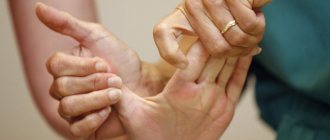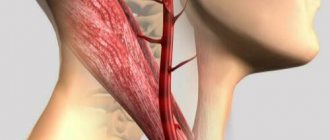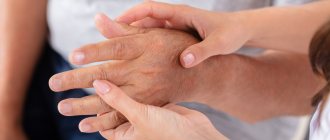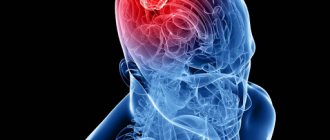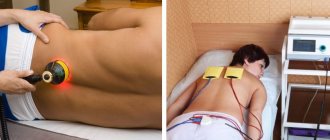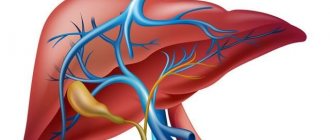Causes
Symptoms
Prevention
Treatment
Causes of phlebitis
Slowing blood flow is the most common cause of phlebitis, especially when the venous wall is weakened and prone to varicose veins.
Phlebitis can also develop if a vein is compressed for a long time by tight clothing or, for example, squeezed by the edge of a chair. Another common cause is venous catheters that are left in a vein for several days to give infusions or medications. Phlebitis can also be caused by mechanical damage to the venous wall or the penetration of bacteria after operations and during prolonged bed rest. Another common cause of vein inflammation is damage to the vessel wall. This damage may be caused by:
- Infusions, e.g. during or after surgery,
- blood sampling,
- venous access (catheter) or
- a bite of an insect
The entry of bacteria can cause the development of inflammation of infectious phlebitis. Blood composition also plays an important role in the development of phlebitis. Blood clotting may increase due to illness or lack of fluid in the body. This can lead to the development of blood clots.
Additional cervical rib and other anomalies
If the hand becomes less sensitive, goes numb (and not the whole hand may go numb, but, as often happens, the fourth, fifth fingers and often the inner surface of the shoulder, forearm), certain movement disorders are observed, it is quite possible that the cause of the disease is related to the neurovascular thoracic outlet compression syndrome.
This disease occurs in women 6-7 times more often than in men, which is to a certain extent due to anatomical features. Thoracic outlet syndrome usually appears after the age of twenty; Compression of blood vessels and nerves can occur in different anatomical areas. Quite often this change is congenital (for example, a person has an extra rib, the so-called cervical rib). It happens that there is a narrow space between the first rib and the collarbone (due to an anomaly in the development of the upper ribs, collarbone, cervical vertebrae) or its narrowing with age, when the muscles weaken and the vessels are compressed...
In children, an additional cervical rib is usually detected at 12-13 years of age. Unfortunately, people are not interested in how many ribs a person has until complaints and complications arise. As a rule, an additional rib can only be seen on an image, but sometimes even radiologists do not “identify” it. It happens that the rib is not fully formed, and the dense fastial cord compresses the vessels and nerve trunks of the brachial plexus...
Elements of compression are often observed in people who consider themselves completely healthy. But compression syndrome can significantly reduce the quality of life and, most importantly, cause serious complications.
First of all, compression of the neurovascular bundle occurs in a certain position of the hand (“behind the head”, hand raised up and abducted, or turned “right-left”). As a result of microtrauma of the vascular wall repeated in this position and due to its compression, thrombosis of large main vessels or vessels of the hand can occur with the formation of small blood clots.
If, for example, thrombosis of the subclavian artery occurs as a result of the disease, this can lead to gangrene of the fingers and even the hand, and to the loss of a limb. In some cases, this disease leads to paralysis.
The clinical manifestations of hand diseases are so varied that a diagnosis can only be made by a specialist who is very well versed in this issue. Over the past thirty years, hand diseases have begun to be studied more closely in our country, and surgeons have developed appropriate operations. Moreover, it was Ukrainian specialists who took the leading positions in this matter.
Prevention of phlebitis
You can independently prevent the development of phlebitis and other venous diseases by minimizing the risk factors described below. Adviсe:
- Basic treatment: Use medical compression stockings daily if you are prone to varicose veins.
- Exercise: Avoid prolonged standing or sitting, and do venous support exercises to activate the musculovenous pump.
- Sports: Sports such as swimming, hiking and race walking support your veins.
- Drink enough water: Lack of fluid thickens the blood and increases the risk of blood clots.
- See your doctor: Varicose veins need to be treated.
- Risk factor: Take care of your health: stop smoking, because smoking changes the walls of blood vessels.
Veins hurt after training: how to relieve the condition
To relieve discomfort after exercise, doctors recommend resting in a lying position, raising your legs up (for example, placing your feet on the wall). Warm foot baths will also be helpful.
However, this is a symptomatic treatment.
“To avoid unpleasant sensations after training, you need to make sure that venous stagnation does not occur in the lower extremities,” comments Grigory Bashkirtsev.
For this it is recommended:
- Wear compression garments;
- Eliminate bad habits;
- Monitor your weight - reduce body weight if it is increased;
- Correct hormonal imbalances, etc.
“If you correctly follow all the recommendations, pain will not bother you,” adds Grigory Bashkirtsev.
Treatment of phlebitis
Treatment for venous inflammation depends on its type and severity. First, the doctor finds out whether the deep veins are affected.
Many patients with thrombophlebitis find that cooling the inflamed area relieves pain. Depending on the location and size of the clot, there are different treatment options. Treatment with anticoagulants to dissolve the blood clot is possible. The clot can also be removed surgically. In some cases, symptomatic treatment is sufficient.
Main treatment: Use of medical compression stockings for phlebitis
The main treatment involves the use of properly selected medical compression stockings. It is particularly effective in combination with physical exercise: the compression stockings and the activation of the muscular-venous pump ensure that the diameter of the veins is reduced. This means that blood moves faster towards the heart and does not accumulate in the vessels of the legs. Symptoms such as pain, swelling and pressure are significantly reduced, resulting in an improved quality of life.
What happens if phlebitis is not treated?
Easily diagnosed, superficial phlebitis is highly treatable and often resolves within a few days without complications. If phlebitis is not treated, it can progress and cause prolonged pain lasting up to several weeks. The situation becomes especially dangerous if the vein affected by phlebioma connects to the deep venous system. If in this case treatment is not started in a timely manner, deep vein thrombosis may develop with a high risk of pulmonary embolism.
Which doctor treats phlebitis?
If you develop phlebitis, you should immediately consult a doctor (phlebologist, vascular surgeon, dermatologist).
For thrombophlebitis, patients are prescribed:
- fibrinolytics (drugs that dissolve blood clots),
- anti-inflammatory drugs,
- phlebotonics.
If there is a threat of the process spreading into the deep veins, surgical intervention is performed.
You can undergo all the necessary studies and determine the exact cause of the pain at the Spectra clinic. Attentive attitude towards each patient, high quality of service and responsibility for results are the main principles of our work. By contacting us, you trust the health of your feet to professionals.
Compression jersey medi
Thanks to the breathable and elastic material, compression jersey provides high wearing comfort. Modern medical compression hosiery is visually indistinguishable from model hosiery, but provides high medical effectiveness when used.
Here you can find more information about medi compression stockings.
The human body
How do veins work?
Vienna
Product Tips
Ideal compression product
Compression hosiery
The mechanism of pain is a complex process
There are many prerequisites leading to pain syndrome, and they are divided into two main groups.
So, the first group includes reasons not related to the presence of the disease:
- When the hand is in an unnatural position for a long time;
- Genetically weak ligaments and tendons;
- Alcoholism and drug addiction;
- Taking medications without a doctor's prescription, specifically antiepileptic drugs are especially dangerous;
- Long-term use of the keyboard;
- Professions of crane operator, carpenter, driver, as well as workers using a jackhammer;
- Effects of playing sports (tennis, golf, heavy weight exercise, rowing);
- Carpal syndrome. Often occurs during pregnancy in the second and third semester due to rapid weight gain. The syndrome is expressed through intense night pain and numbness of the limb.
The second group is the most extensive! - form pathological causes, namely:
Injuries. This could be a dislocation or fracture, bruise, rupture or sprain of a ligament. The pain is accompanied by the appearance of swelling.- Joint inflammation or arthritis. Infectious or aseptic. Pain in the left wrist when bending is a symptom of this disease. This reason is the most common for pain in the hand.
- Aching pain in the wrist of the left hand may be a sign of the initial stage of arthrosis (the pain intensifies with the slightest load on the joint);
- Querwen's disease may present with pain in the left wrist and hand. Often this disease appears in patients who have to do the same joint movements many times in a row.
- Carpal tunnel syndrome. It is formed due to wear and tear of the tendon and when the nerve fibers become inflamed. This syndrome is a frequent companion of workers at the computer.
- Tendinitis. One of the main symptoms of this problem is pain in the left wrist during exercise. Excessive stress on the wrist contributes to its appearance. A professional athlete often encounters this disease.
- Gout. Uric acid or calcium accumulate in the joint area, causing a burning sensation and severe pain. An exacerbation of the disease is accompanied by severe pain and throbbing in the affected area.
- Bone destruction or osteoporosis. Destruction can begin anywhere in the human body.
- Inflammation of connective tissue, erythema nodosum. The appearance of tumor-like neoplasms characterizes it. The skin above them acquires a reddish tint, and touching them causes pain.
- Diseases of an infectious nature such as brucellosis and gonorrhea.
- The development of bone and joint tuberculosis, which is extremely rare. People of retirement age are most susceptible to this disease. Basically, the spine is affected by this disease, as it is under the influence of excessive loads.
- Peyronie's disease, which affects exclusively the male population, can contribute to the appearance of wrist pain.
- The cause of sharp pain in the wrist of the left hand may be coronary heart disease and the development of a heart attack. The latter problem requires urgent medical attention and hospitalization.
- Cystic formations, called in medicine ganglia or hygroma. The dorsum of the hand and wrist are mainly affected. Subcutaneous irregularities consist of a jelly-like fluid. The disease is treated by excision of the cavity or aspiration.
- When the roots and nerves in the spinal cord of the spine are compressed. Acute pain in the left wrist can be caused by this problem.
The area where pain is localized will tell you about a particular ailment. Often pain in the wrist area is a consequence of problems such as the presence of lesions of the central nervous system, arthrosis and rheumatoid arthritis, bone cracks, and damage to the ligaments.



